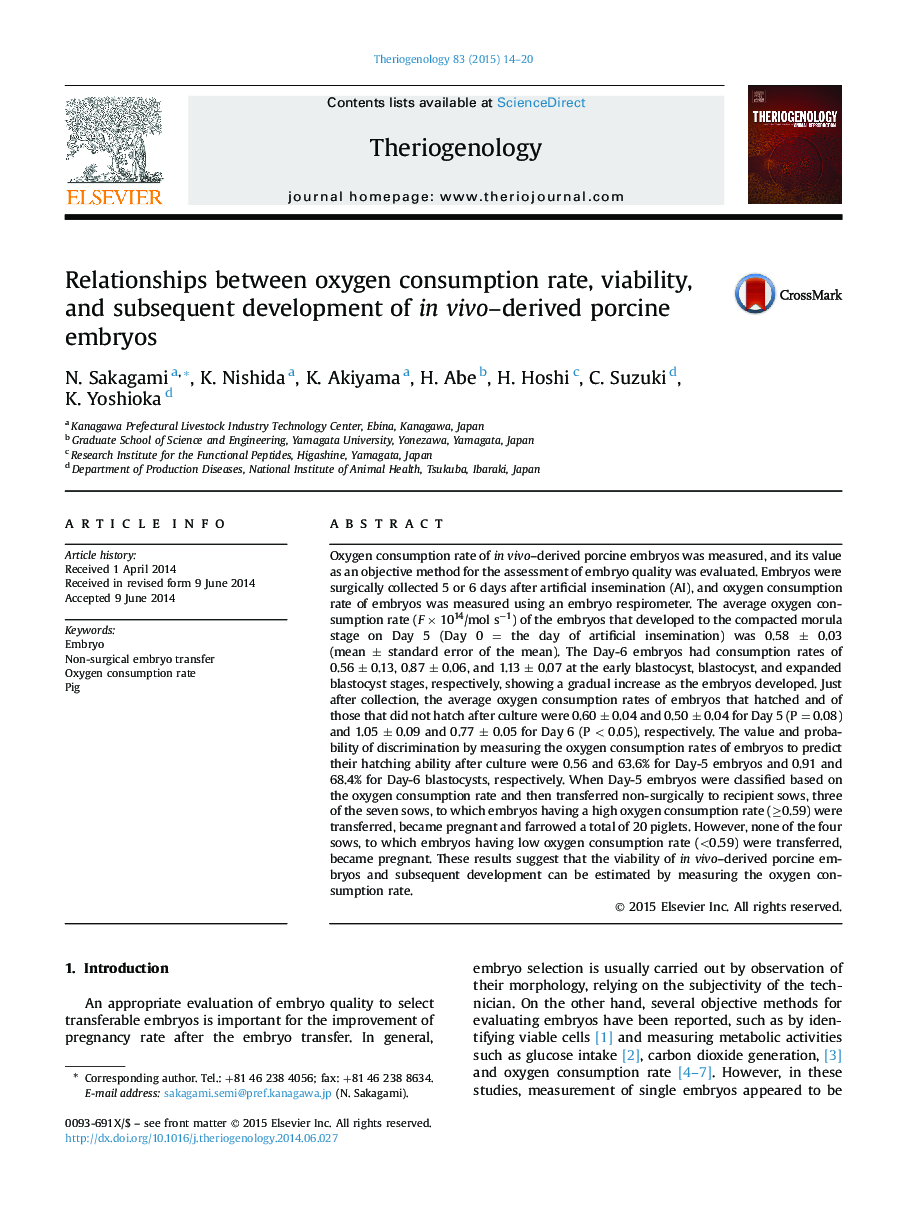| کد مقاله | کد نشریه | سال انتشار | مقاله انگلیسی | نسخه تمام متن |
|---|---|---|---|---|
| 2096245 | 1082159 | 2015 | 7 صفحه PDF | دانلود رایگان |
Oxygen consumption rate of in vivo–derived porcine embryos was measured, and its value as an objective method for the assessment of embryo quality was evaluated. Embryos were surgically collected 5 or 6 days after artificial insemination (AI), and oxygen consumption rate of embryos was measured using an embryo respirometer. The average oxygen consumption rate (F × 1014/mol s−1) of the embryos that developed to the compacted morula stage on Day 5 (Day 0 = the day of artificial insemination) was 0.58 ± 0.03 (mean ± standard error of the mean). The Day-6 embryos had consumption rates of 0.56 ± 0.13, 0.87 ± 0.06, and 1.13 ± 0.07 at the early blastocyst, blastocyst, and expanded blastocyst stages, respectively, showing a gradual increase as the embryos developed. Just after collection, the average oxygen consumption rates of embryos that hatched and of those that did not hatch after culture were 0.60 ± 0.04 and 0.50 ± 0.04 for Day 5 (P = 0.08) and 1.05 ± 0.09 and 0.77 ± 0.05 for Day 6 (P < 0.05), respectively. The value and probability of discrimination by measuring the oxygen consumption rates of embryos to predict their hatching ability after culture were 0.56 and 63.6% for Day-5 embryos and 0.91 and 68.4% for Day-6 blastocysts, respectively. When Day-5 embryos were classified based on the oxygen consumption rate and then transferred non-surgically to recipient sows, three of the seven sows, to which embryos having a high oxygen consumption rate (≥0.59) were transferred, became pregnant and farrowed a total of 20 piglets. However, none of the four sows, to which embryos having low oxygen consumption rate (<0.59) were transferred, became pregnant. These results suggest that the viability of in vivo–derived porcine embryos and subsequent development can be estimated by measuring the oxygen consumption rate.
Journal: Theriogenology - Volume 83, Issue 1, 1 January 2015, Pages 14–20
